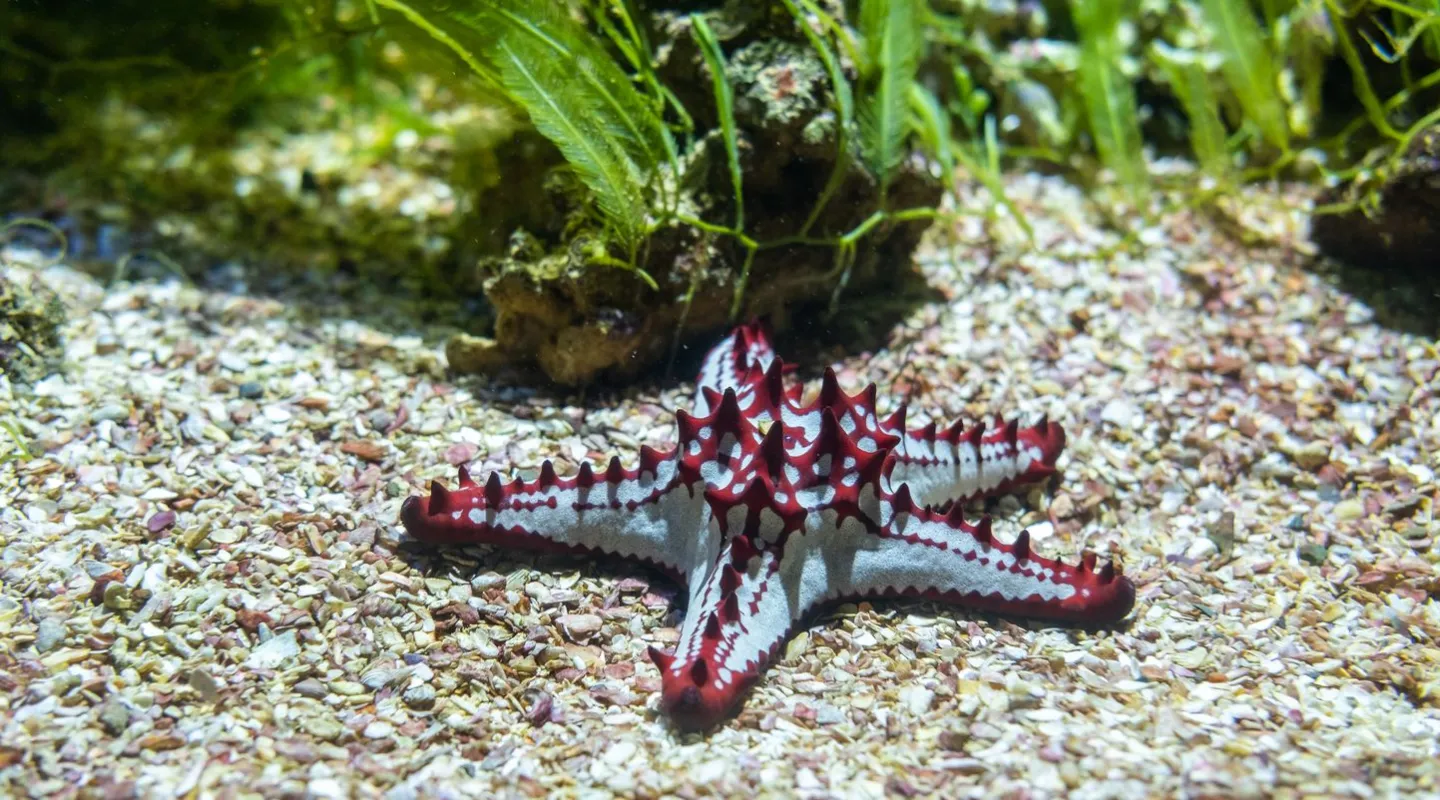Breeding takes place in spring, at full moon. When it releases its gametes into the water, the seastar straightens up and only the end of its 5 arms remains in contact with the sea bed. The larvae are carried by the currents for about two weeks before settling on the seabed to begin their metamorphosis.

Identity card
Horned seastar
- Scientific name:
- Protoreaster nodosus
- Family:
- Oreasteridae
- Class:
- Asteroidea
- Phylum:
- Echinodermata
- Year of description:
- Linnaeus, 1758
- IUCN Status:
- Not Evaluated
- Distribution:
-
Indian and Pacific Oceans.
- Habitat:
-
The horned seastar lives on seagrass beds, sandy areas or on reef flats.
- Size:
This large seastar measures 30 to 40 cm.
- Diet:
-
Sponges, micro-organisms, mollusc and sea urchin corpses, rock and sand microfauna and dead algae.







